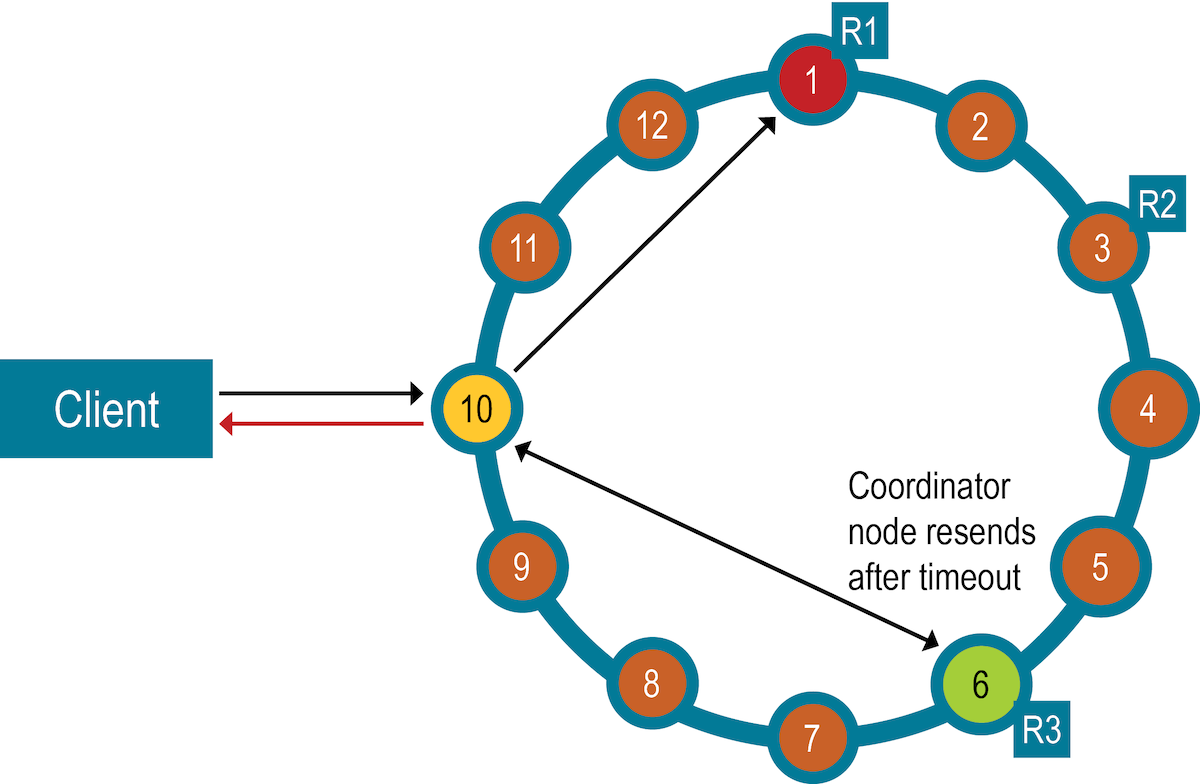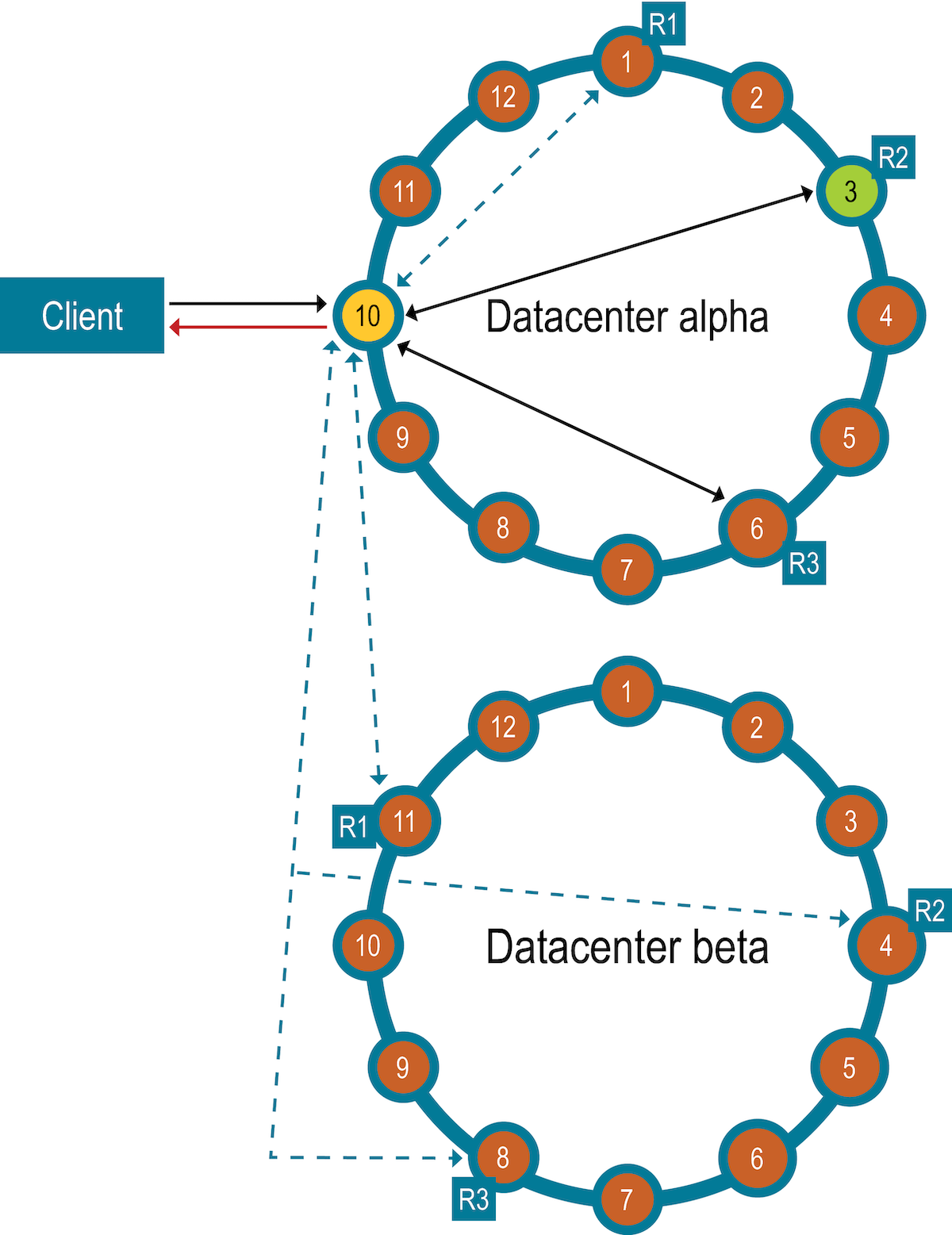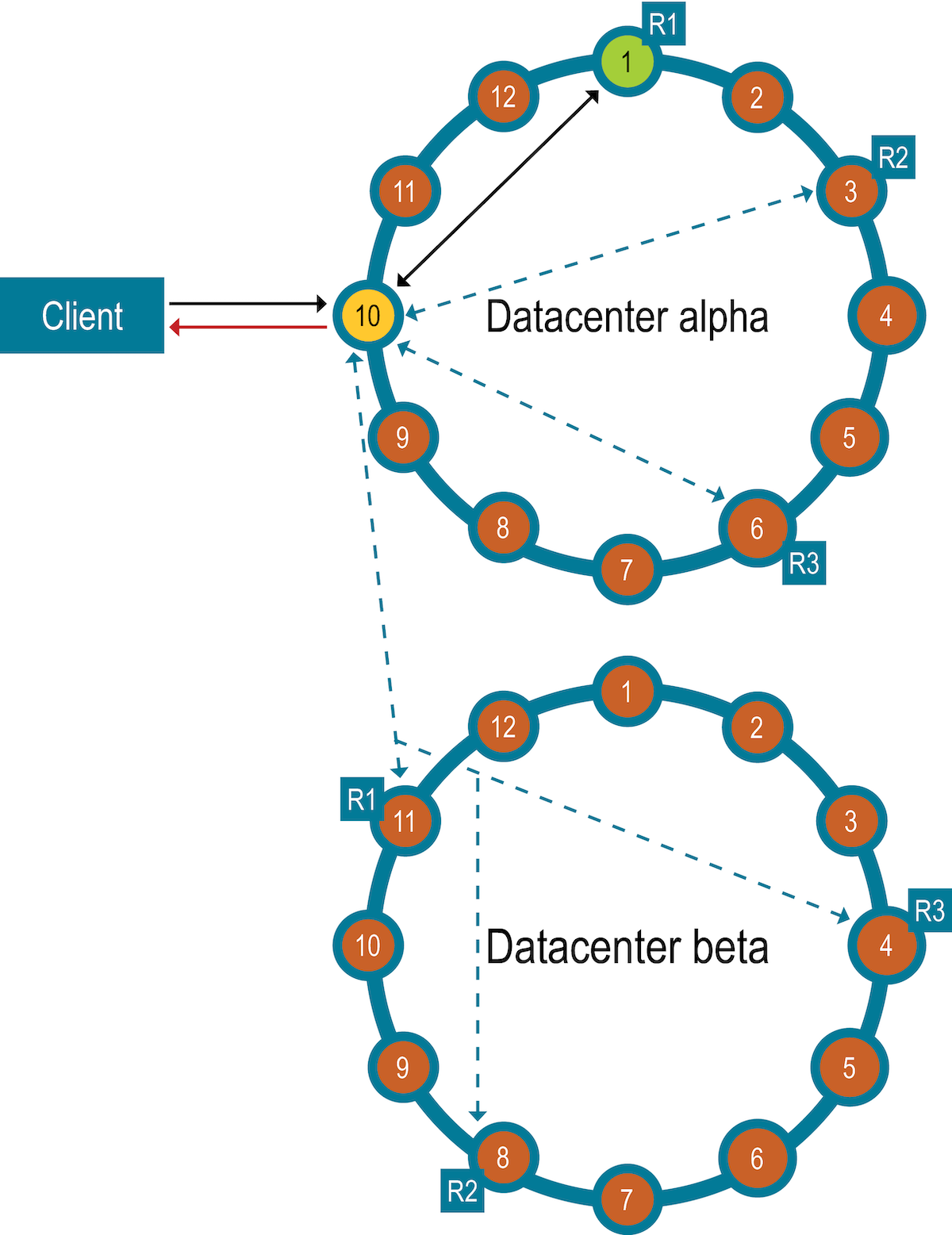How are read requests accomplished?
A coordinator node can send three types of read requests to a replica.
There are three types of read requests that a coordinator node can send to a replica:
- A direct read request
- A digest request
- A background read repair request
In a direct read request, the coordinator node contacts one replica node. In a digest request, the coordinator node first contacts the replicas specified by the consistency level. The coordinator node sends requests to replicas that respond the fastest. The contacted nodes respond with a digest of the requested data. If multiple nodes are contacted, the rows from each replica are compared in memory for consistency.
If any replica nodes have out-of-date data, the coordinator node sends a background read repair, which forwards the result from the replica with the most recent data (based on the timestamp) back to the client. Read repair requests ensure that the requested row is made consistent on all replicas involved in a read query.
For illustrated examples of read requests, see Examples of read consistency levels.
Rapid read protection using speculative_retry
When the originally selected replica nodes are down or taking too long to respond, rapid read protection allows the DataStax Distribution of Apache Cassandra™ (DDAC) to still deliver read requests. If the table has been configured with the speculative_retry property, the coordinator node for the read request will retry the request with another replica node if the original replica node exceeds a configurable timeout value to complete the read request.

 Coordinator node
Coordinator node
 Chosen node
Chosen node
Examples of read consistency levels
Diagrams illustrating read request examples with different consistency levels.
Rapid read protection diagram shows how the speculative retry table property affects consistency.
A single-datacenter cluster with a consistency level of QUORUM
In a single-datacenter cluster with a replication factor of 3 and a read consistency level
of QUORUM, 2 of the 3 replicas ((3/2)+1 = 2) for the given
row must respond to fulfill the read request. If the contacted replicas have different
versions of the row, the replica with the most recent version will return the requested
data. In the background, the third replica is checked for consistency with the first two,
and if needed, a read repair is initiated for the out-of-date replicas.

 Coordinator node
Coordinator node
 Chosen node
Chosen node
![]() Read response
Read response
![]() Read repair
Read repair
A single-datacenter cluster with a consistency level of ONE
In a single-datacenter cluster with a replication factor of 3 and a read consistency level
of ONE, the closest replica for the given row is contacted to fulfill the
read request. Based on the read_repair_chance setting of the table, a read
repair might be initiated in the background for the other replicas.

 Coordinator node
Coordinator node
 Chosen node
Chosen node
![]() Read response
Read response
![]() Read repair
Read repair
A two-datacenter cluster with a consistency level of QUORUM
In a two-datacenter cluster with a replication factor of 3 and a read consistency of
QUORUM, 4 replicas for the given row must respond to fulfill the read
request. The 4 replicas can be from any datacenter. In the background, the remaining
replicas are checked for consistency with the first four. If needed, a read repair is
initiated for the out-of-date replicas.

 Coordinator node
Coordinator node
 Chosen node
Chosen node
![]() Read response
Read response
![]() Read repair
Read repair
A two-datacenter cluster with a consistency level of LOCAL_QUORUM
In a two-datacenter cluster with a replication factor of 3 and a read consistency of
LOCAL_QUORUM, 2 replicas in the same datacenter as the coordinator node
for the given row must respond to fulfill the read request. In the background, the remaining
replicas are checked for consistency with the first 2. If needed, a read repair is initiated
for the out-of-date replicas.

 Coordinator node
Coordinator node
 Chosen node
Chosen node
![]() Read
response
Read
response
![]() Read repair
Read repair
A two-datacenter cluster with a consistency level of ONE
In a two-datacenter cluster with a replication factor of 3, and a read consistency of
ONE, the closest replica for the given row, regardless of datacenter, is
contacted to fulfill the read request. Based on the read_repair_chance
setting of the table, a read repair might be initiated in the background for the other
replicas.

 Coordinator node
Coordinator node
 Chosen node
Chosen node
![]() Read
response
Read
response
![]() Read repair
Read repair
A two-datacenter cluster with a consistency level of LOCAL_ONE
In a two-datacenter cluster with a replication factor of 3, and a read consistency of
LOCAL_ONE, the closest replica for the given row in the same datacenter
as the coordinator node is contacted to fulfill the read request. Based on the
read_repair_chance setting of the table, a read repair might be initiated
in the background for the other replicas.

 Coordinator node
Coordinator node
 Chosen node
Chosen node
![]() Read
response
Read
response
![]() Read repair
Read repair
